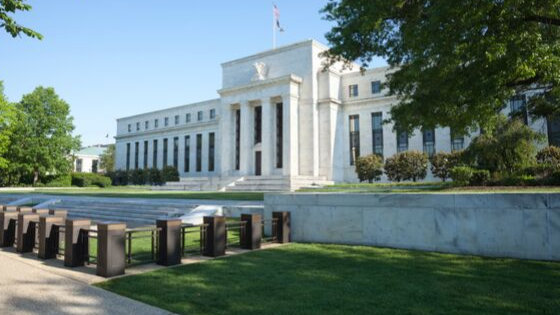Editor’s note: Fed nominee Judy Shelton argues that the Fed has previously been required to address trade deficits in its policies and should again.
Lawmakers in the past have broadened the central bank’s goals, directing it to boost U.S. competitiveness.
[Judy Shelton | September 16, 2019 | WSJ]
The role of the Federal Reserve as an instrument of public economic power could use some clarification. The central bank’s status as an independent agency derives from an act of Congress in 1913, and is reinforced by oft-invoked references to its statutory “dual mandate”: to achieve stable prices and full employment.
But the Fed’s job description is more complicated than people usually think. Its purposes have evolved through various legislative changes over the decades, the most notable of which was imposed by Congress in 1977. The Federal Reserve Reform Act, which gave the central bank its current, explicit mandate, named three goals rather than two.
The legislation as amended states: “The Board of Governors of the Federal Reserve System and the Federal Open Market Committee shall maintain long run growth of the monetary and credit aggregates commensurate with the economy’s long run potential to increase production, so as to promote effectively the goals of maximum employment, stable prices, and moderate long-term interest rates.”
While policy makers frequently expound on the Fed’s mandate to promote full employment and stable prices, its duty to promote moderate long-term interest rates is seldom mentioned. Yet the third goal is vital, and it goes to the heart of the problem of today’s inverted yield curve. Short-term interest rates should be lower than long-term interest rates; it’s a basic premise of sound finance and rational investment conditions. Why does the Fed treat the first two objectives with such reverence but disregard the third pillar as an equal imperative?
The Full Employment and Balanced Growth Act of 1978, also known as the Humphrey-Hawkins Act, is the other major law that has shaped the Federal Reserve’s role. It imposed on the Fed an obligation to pursue specific economic goals in the best interests of the nation. But contrary to the notion that the Fed should stand aloof as an independent agency, the intention of the 1978 law was to harness monetary policy to achieve the enumerated goals through “better integration” of economic policy-making within the federal government:
“Attainment of these objectives should be facilitated by setting explicit short-term and medium-term economic goals, and by improved coordination among the President, the Congress, and the Board of Governors of the Federal Reserve System.”
Declaring that “trade deficits are a major national problem,” the Humphrey-Hawkins Act explicitly states—six times—that “achievement of an improved trade balance” should be a primary objective of coordinated economic policy-making within the federal government. The law elaborates on the need to “give proper attention to the role of increased exports and improvement in the international competitiveness of agriculture, business, and industry in providing productive employment opportunities and achieving an improved trade balance.” It states that fulfilling such objectives “will promote the economic security and well-being of all citizens of the Nation.”
The Humphrey-Hawkins Act quietly expired in 2000, but its legacy for ensuring the central bank’s accountability continues through the biannual testimony given to Congress by the Fed chairman. If the Fed were to evaluate its own performance in adhering to the full slate of directives received from Congress, how would it score?
Current employment levels and participation rates are impressively high. But the Fed deserves little credit for this, as it acknowledges in the FAQs on its own website: “The maximum level of employment is largely determined by nonmonetary factors that affect the structure and dynamics of the job market.”
As for stable prices, the Fed should necessarily rate its performance as unsatisfactory given its difficulties in reaching its own 2% inflation goal. The Fed has also failed to meet the standard set by Humphrey-Hawkins, which gave a goal of zero inflation by 1988. Finally, with pension funds struggling for adequate yields to cover their liabilities, the Fed can hardly claim to have delivered moderate long-term interest rates.
The point of taking a closer look at these two laws is to recognize that Congress historically hasn’t sought to treat the Federal Reserve as a detached lever of economic power. Rather, lawmakers intended to incorporate monetary policy into an overarching effort to achieve “important national requirements” that improve U.S. economic prospects.
Humphrey-Hawkins was particularly insightful—even prescient—in calling for improved coordination of U.S. economic policy to address “foreign competition in the United States and abroad” and to ensure “the ability of our economy to compete successfully in international markets.” In language that resonates today on the need to confront unfair trade tactics and currency maneuvering by U.S. trading partners, the law notes that attainment of the requirements depends on policies that promote “a free and fair international trading system and a sound and stable international monetary order.”
It would be appropriate and constructive for the Fed to consider international monetary stability in its interest-rate decisions. In an era of world-wide currency exchange, America’s central bank should not ignore the effects of movements spurred by other major central banks. With no consistent free-trade principles governing global monetary policy, the Fed must take proactive steps to ensure that the U.S. can compete successfully.
It would be in keeping with its historical mandate if the Fed were to pursue a more coordinated relationship with both Congress and the president. When it comes to fulfilling the economic goals authorized by legislative decree, it isn’t seemly for a government agency to be selective.
Ms. Shelton, an economist, is author of “Money Meltdown: Restoring Order to the Global Currency System.” President Trump has announced his intention to nominate her to the Federal Reserve Board of Governors.
Read the original article here.













